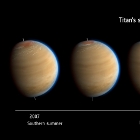Op een zonnige dag tussen medio mei en eind juni gaat Nederland massaal met behulp van het iSPEX-opzetstukje op de smartphone-camera metingen verrichten aan fijnstof in de lucht. Sinds februari van dit jaar hebben al duizenden Nederlanders zich aangemeld voor deelname aan de landelijke iSPEX-meetdag. De productie van 10.000 opzetstukjes is in volle gang; ze …
Succesful space telescope about to take its last breath
ESA’s Herschel space observatory is expected to exhaust its supply of liquid helium coolant in the coming weeks after spending more than three exciting years studying the cool Universe. Herschel was launched on 14 May 2009 and, with a main mirror 3.5 m across, it is the largest, most powerful infrared telescope ever flown in …
ISPEX project officially started – registration for participation open
iSPEX1 The registration for the great citizen science project iSPEX, “Measuring aerosols with your smartphone”, is open. From today you can order an add-on for you smartphone, to change this everyday tool into a scientific instrument. Anyone with an iSPEX add-on can participate to the large measurement day scheduled for late spring. Please click here …
New type of telescope can possibly discover extraterrestrial life
A team of Dutch astronomers has shown that with a new type of telescope it might be possible to find signs of extraterrestrial life within the next 25 years. Certain gases exhaled by organisms can, in principle, be observed in the atmospheres of exoplanets – planets orbiting stars other than our sun. This idea, which …
HIFI strives for the best and cures its last frequency problem
In an attempt to take the scientific output of the molecule hunter HIFI to the limit, the HIFI-team has cured a small frequency range (band 3B). Knowing that there was a possibility of losing this band the team had postponed the attempt until the very end of the operations, due in April 2013. HIFI – …
Chameleon pulsar baffles astronomers
An international team – led by Dutch astronomers (SRON, NOVA and ASTRON) – has made a tantalizing discovery about the way pulsars emit radiation. The emission of X-rays and radio waves by these pulsating neutron stars is able to change dramatically in seconds, simultaneously, in a way that cannot be explained with current theory. It …
Breakthrough in super-terahertz detection technology
An international team of researchers led by SRON and TU Delft have successfully demonstrated a superconducting heterodyne receiver with an unprecedented high sensitivity at 4,7 THz in frequency or 63 micrometers in wavelength. The so called super-terahertz heterodyne receiver – about 85 times more sensitive than its predecessor, operating near the quantum noise limit – …
New research into ‘turbulent’ black hole and origin of elements in the universe
SRON astronomers have been awarded four weeks of observation time at the European X-ray telescope XMM-Newton (ESA) to study a black hole and the origin of chemical elements in the universe. It is exceptional that the astronomers have received so much time on this workhorse of X-ray astronomy. Due to the huge international interest in …
Autumn is setting in rapidly now on Saturn’s moon Titan
{multithumb thumb_width=300} As we are getting ready for the winter in the northern hemisphere, seasonal changes on Saturn’s biggest moon are also starting to be rapidly noticed. An international team of scientists has observed the most dramatic increase in concentrations of trace gases since the Cassini satellite arrived at Saturn in 2004. These changes are …












